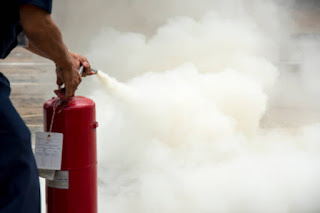Business owners should make sure that their employees are trained in case of emergency. What would happen if there was a fire at work? Would you know what to do or where the nearest extinguisher was located so it could be used immediately, especially given how quickly fires can spread nowadays with all these modern materials being used by manufacturers everywhere!
Identifying the correct fire extinguisher Kenilworth and knowing how to use it can save lives.
Employees must be trained on what equipment is available for use in case of emergencies, such as fires or other safety hazards that may arise at work locations like power transformers where there's potential danger from high voltage contacts if they're damaged by overheating etc.
The PASS method can be used as a simple way to remember what you should do in an emergency. The “Pull To Operate” part of this technique stands for pulling out the fire safety tag or pin, then aiming at its source with one hand while slowly pressing down on trigger with other until it's activated- that is if there are no obstacles blocking your path!
Sweep: You will need to move the fire around with your sweep until it is out.
Types of workplace extinguisher:
You can never be too careful when it comes to fires. The right type of fire extinguisher will depend on what kind you're dealing with and where the flames are located in your building or vehicle; there's no point putting out a grease spill if that'll just spread more quickly than expected!
There are many different types of fires that can happen in a work environment. These classes determine what kind should be used to put out the flames:
Class A for solids,
Class B & C together for liquids/gases or singularly when it comes down fire related equipment like electric wires which might short-circuit due too high temperatures caused by lightning strikes.
It's important you know how your company prefers all these flavours so they don't end up burning anything beyond their immediate area.
Types of fire extinguisher:
Water-Fire Extinguishers: This type of fire extinguisher expels water directly from the flames. Be aware that there are potential electrical hazards like computers and copiers, so avoid contact with this equipment if you can!
The foam extinguisher is the safer option, but it's not always easy to get rid of.
Powder fire Extinguishers can cause major problems when they're left behind and may even start a hazardous situation for yourself or others if used carelessly in an area with flammable materials around such as offices during renovations.
The Co2 Extinguisher: The presence of co2 in an extinguisher can cause a shortage, which is dangerous. It's important to escape before the designated person uses it because there isn't enough air for us all!
The Wet Chemical Fire Extinguisher is a great tool for restaurants and kitchens where oil-based cooking methods are used. This firery can cause the fat in oils to spit out, so care must be taken when using it!




Comments
Post a Comment